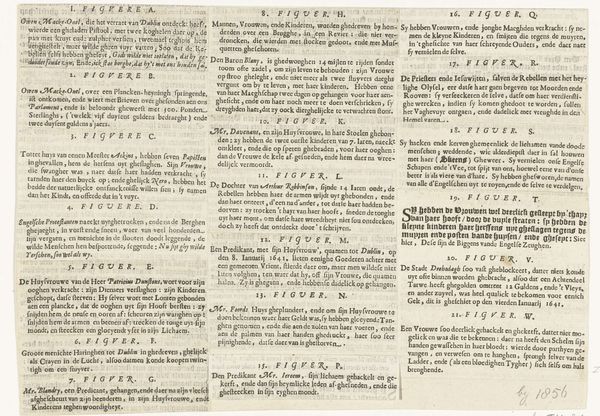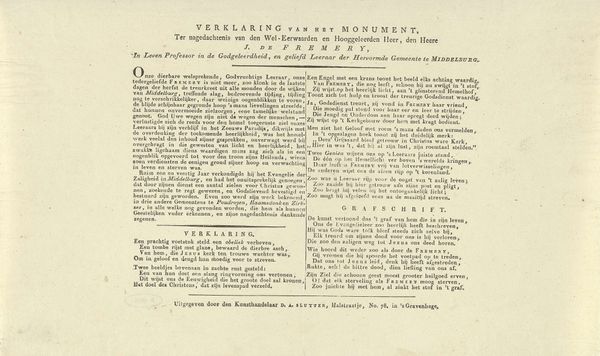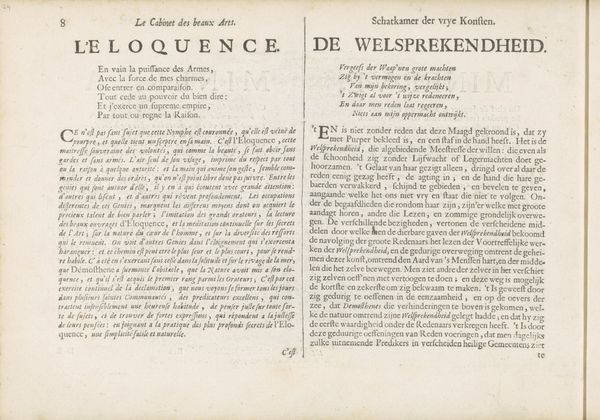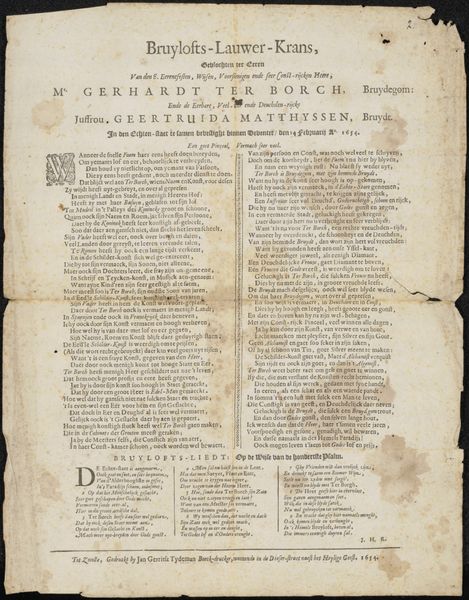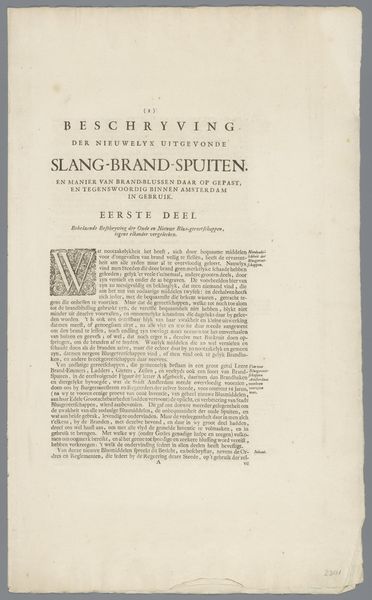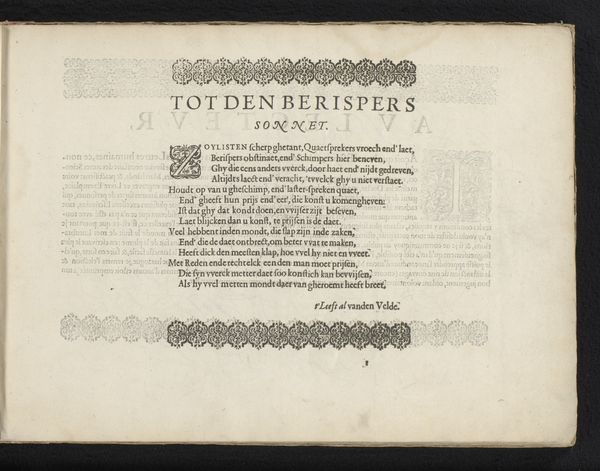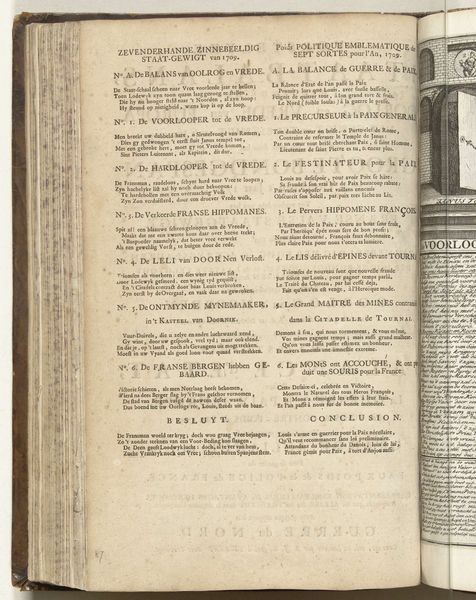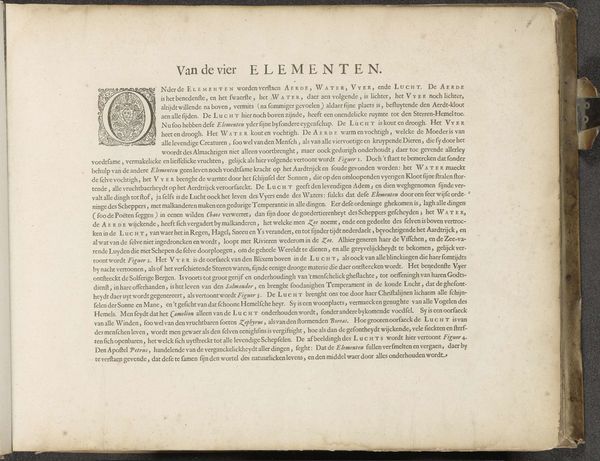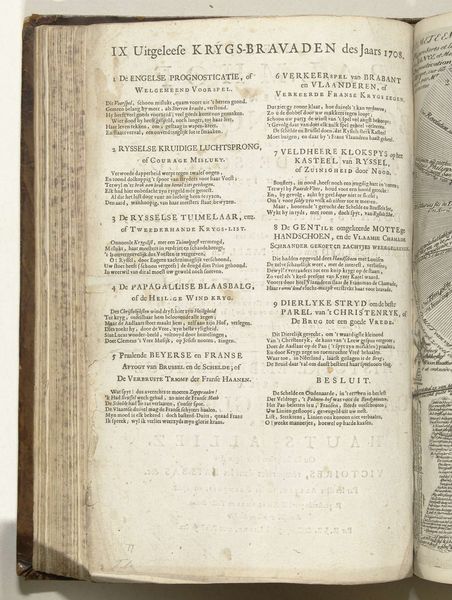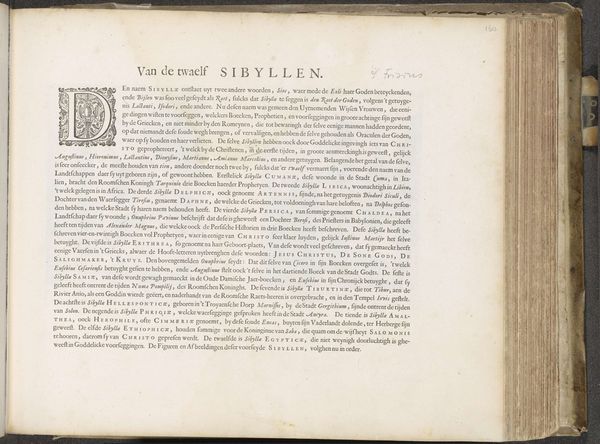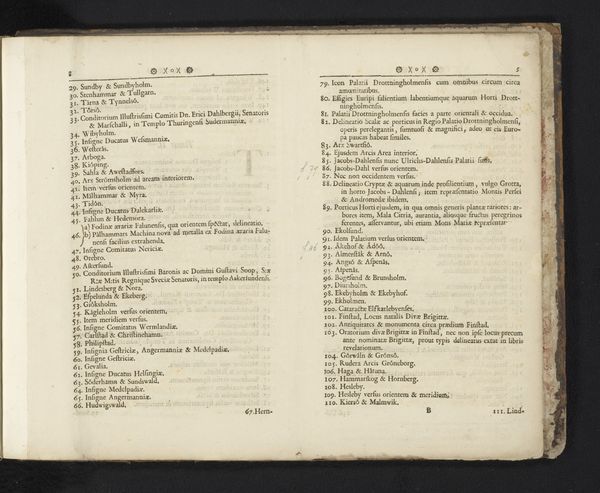
Tekstblad bij de prent over de toepassing van een nieuw type houten brandspuit, 1667 1667
0:00
0:00
graphic-art, print, paper, engraving
#
graphic-art
# print
#
paper
#
text
#
engraving
Dimensions: height 293 mm, width 565 mm
Copyright: Rijks Museum: Open Domain
Editor: Today, we’re looking at a 1667 engraving by Michiel Comans, titled "Tekstblad bij de prent over de toepassing van een nieuw type houten brandspuit, 1667." It’s a broadside, essentially a printed advertisement. It seems quite text-heavy and… official. How do you interpret this work? Curator: This isn’t just an advertisement; it’s a snapshot of technological advancement and social responsibility in 17th-century Dutch society. Look at how the text is presented in both Dutch and French, reflecting the Netherlands' complex relationship with European politics and commerce. How might the invention of a new fire pump have impacted the social dynamics of a city like Amsterdam at this time? Editor: Well, I guess having a better fire pump would be really beneficial! It's literally life-saving, right? Curator: Absolutely. But think about the broader implications. Who benefits most from fire protection? Wealthy merchants, whose warehouses and homes are prime targets for fires. This invention potentially reinforces existing power structures by disproportionately benefiting those already privileged. It's a class issue disguised as innovation. What do you notice about how the "invention" is presented, or framed in this print? Editor: I see...it's presented as a benefit for everyone, a way to show that local leaders are protecting everyone's interests. It seems a bit like propaganda now that I look at it that way. Curator: Precisely. The language used, like "representation" and references to official approval, signals an attempt to legitimize this new technology and its role in maintaining social order. Consider how technologies, even those designed for public safety, are always intertwined with issues of power and control. Editor: That's fascinating. I had only seen it at face value, but now I recognize its context and inherent purpose to reinforce power. Thank you.
Comments
No comments
Be the first to comment and join the conversation on the ultimate creative platform.
